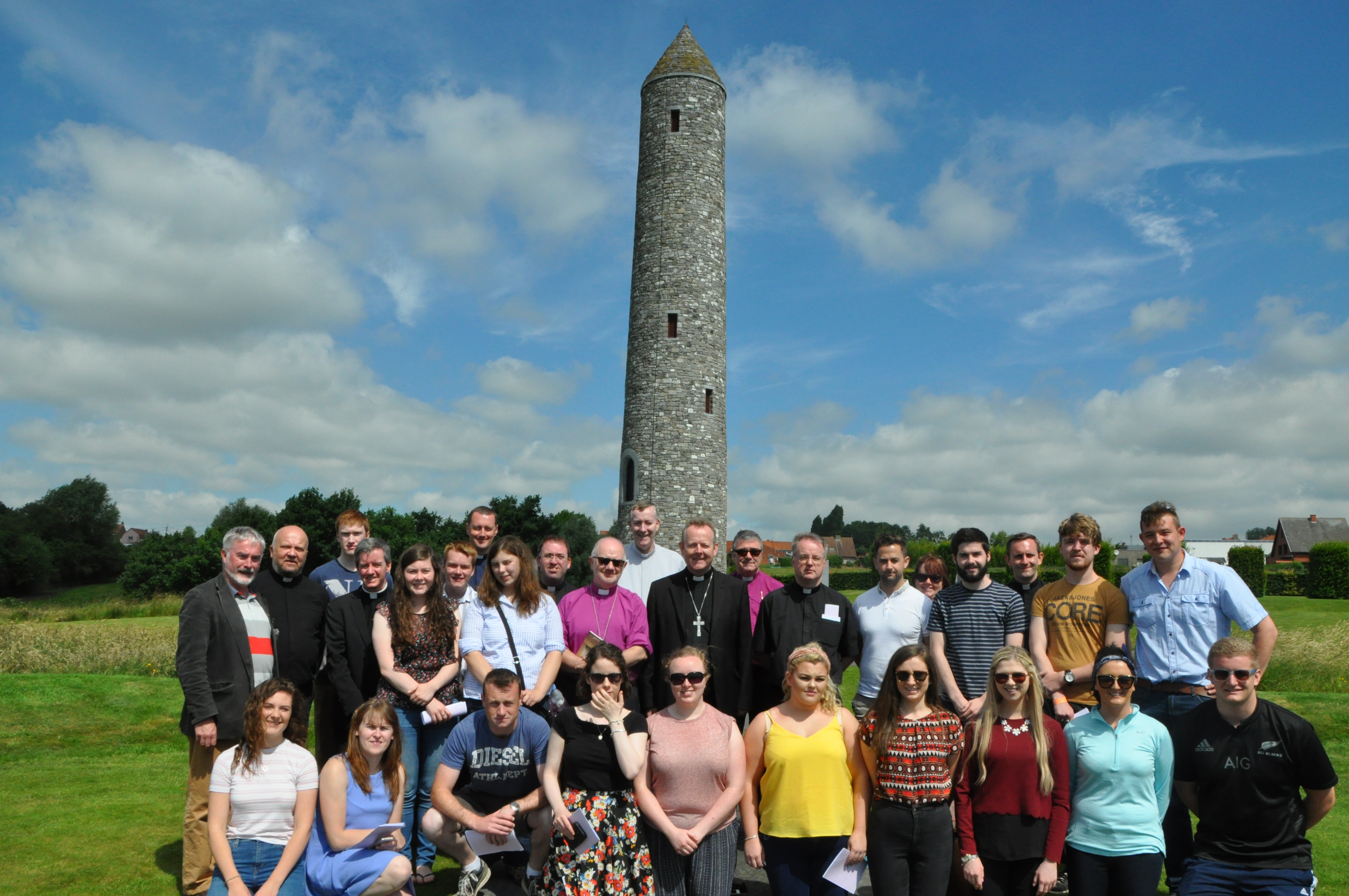The Somme Centenary Pilgrimage continued for a third and final day on Friday 24 June, led by Archbishop Eamon Martin and Archbishop Richard Clarke, and a group of 30 pilgrims from across the island of Ireland.
On Friday morning the group visited the site of the Christmas Truce 1914 and had a chance to walk along the road and take in the vista of where the front lines would have been. There was time for a short reflection at the simple wooden cross marking the site. The group were able to visit the official memorial to the Christmas Truce which is a bronze statue depicting two soldiers shaking hands across the front line.
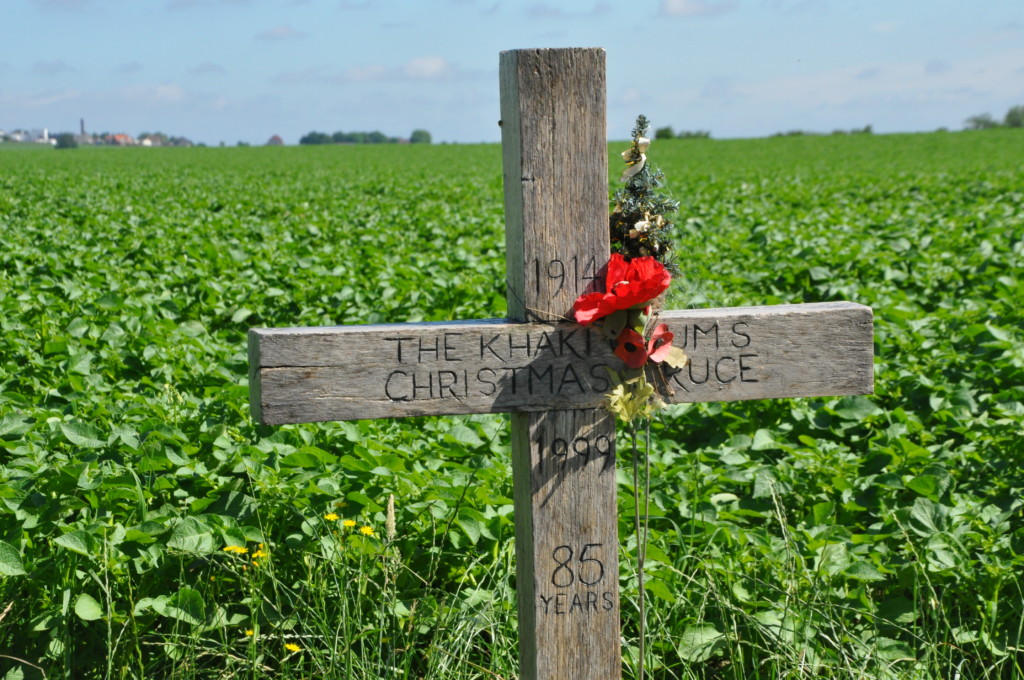
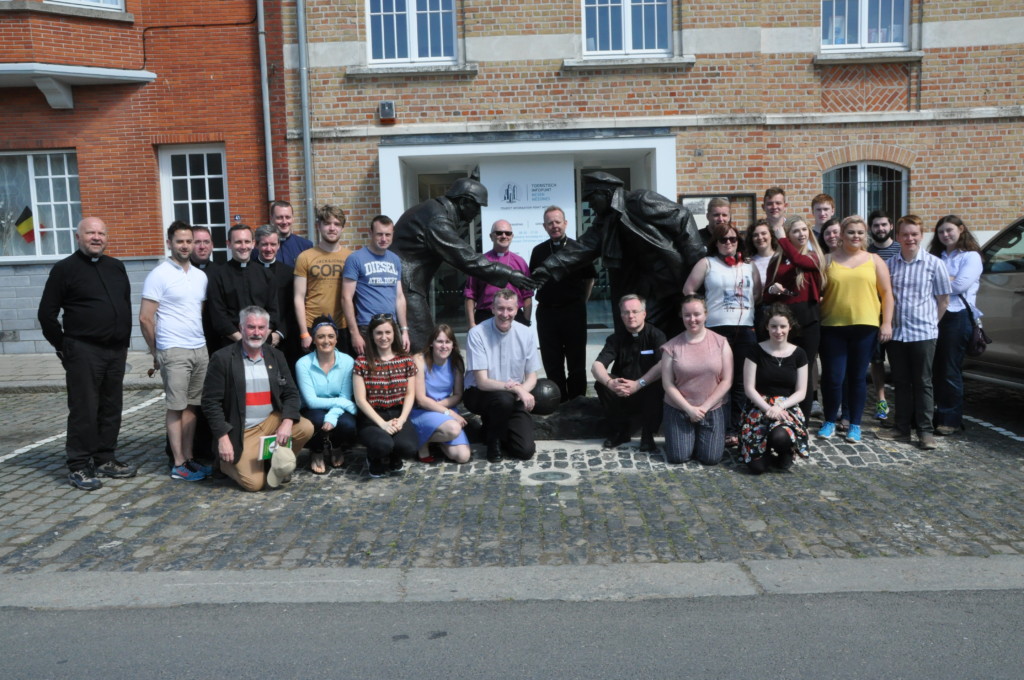
One of the highlights of the centenary pilgrimage was a visit to to the Irish Peace Park in Messines. There was time for shared prayer and reflection, led by the archbishops. The prayers of intercession were read by two of the young pilgrims. The prayer service concluded with Archbishop Clarke reciting some world war poetry and with the entire group singing Make Me A Channel of Your Peace.
Watch: Click here to watch the group singing Make Me A Channel of Your Peace.
The archbishops then led the group in reciting the Peace Pledge which is a permanent feature carved on a plaque on one of the memorial stones at the Peace Park.
Watch: Click here to watch the video of the archbishops leading the Peace Pledge.
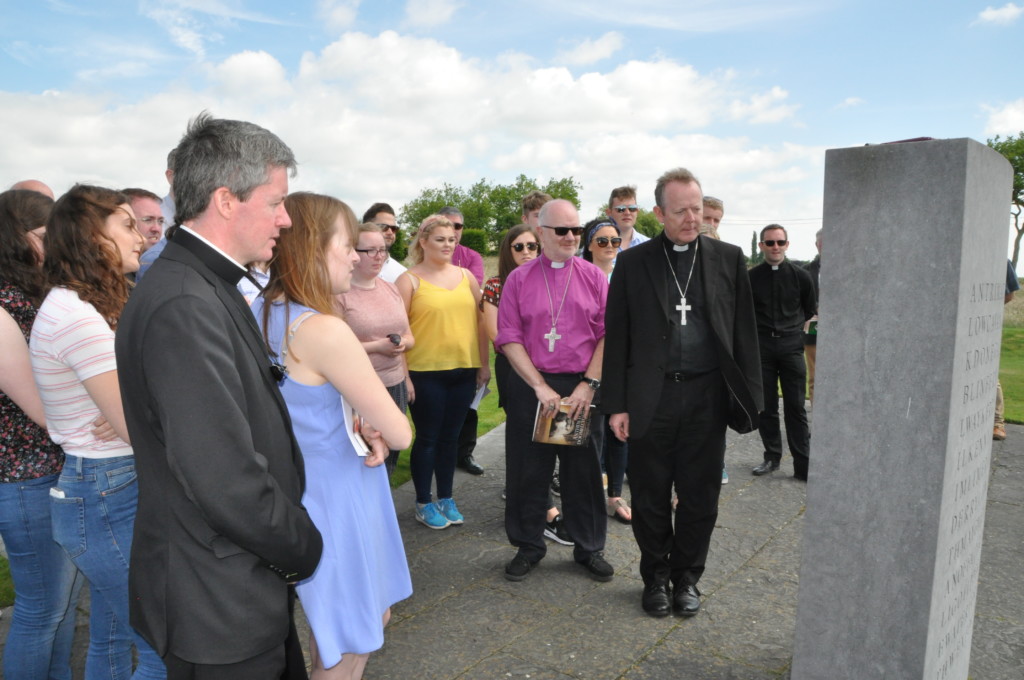
On Friday afternoon the group visited the Memorial Museum Passchendaele 1917, which is a Belgian museum devoted to the 1917 Battle of Passchendaele (also known as the Third Battle of Ypres), where in 1917 in only one hundred days a half million victims were made for only eight kilometers gain of ground. The museum is housed in the historic château grounds of Zonnebeke and focuses on the material aspects of World War I. Pilgrims had a chance to visit the museum and to see some uncovered trenches, memorabilia and to see some of the underground bunkers. The Irish Ambassador to Belgium, Ambassador Eamon Mac Aodha met with the archbishops and some of the pilgrimage group at the Passchendale Museum.
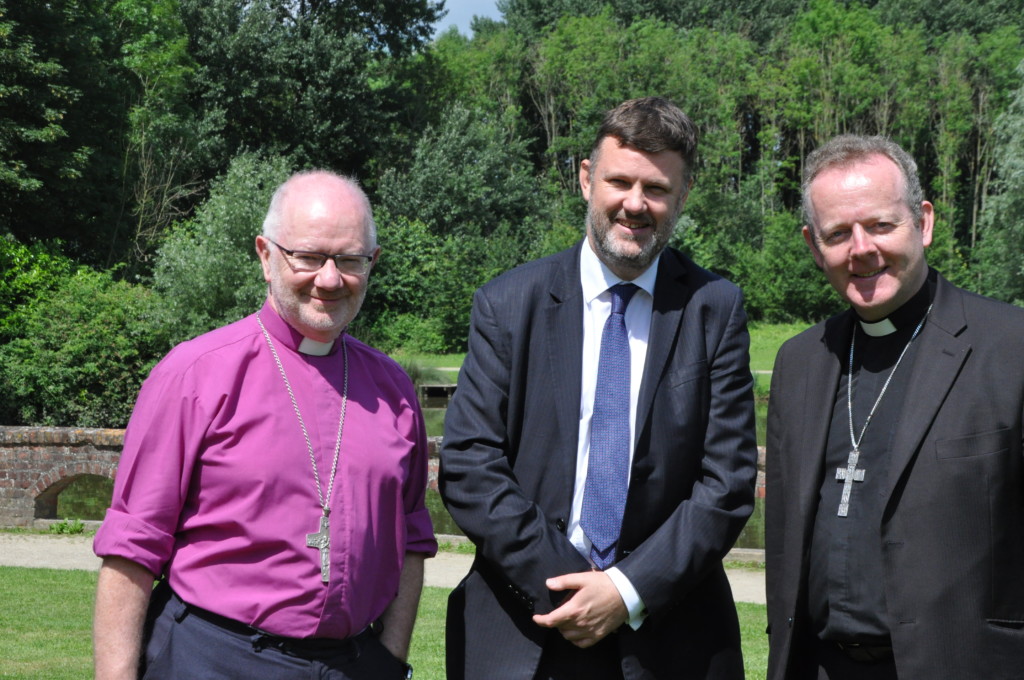
The second last stage of the pilgrimage was a visit to the Tyne Cot cemetery which is the largest commonwealth cemetery in the world.
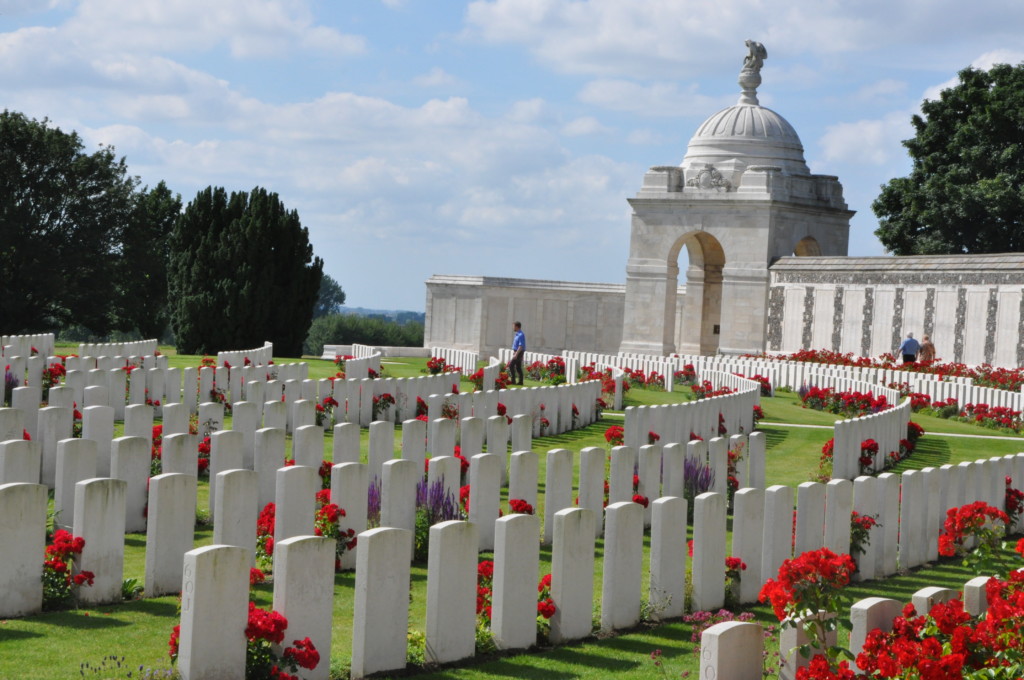
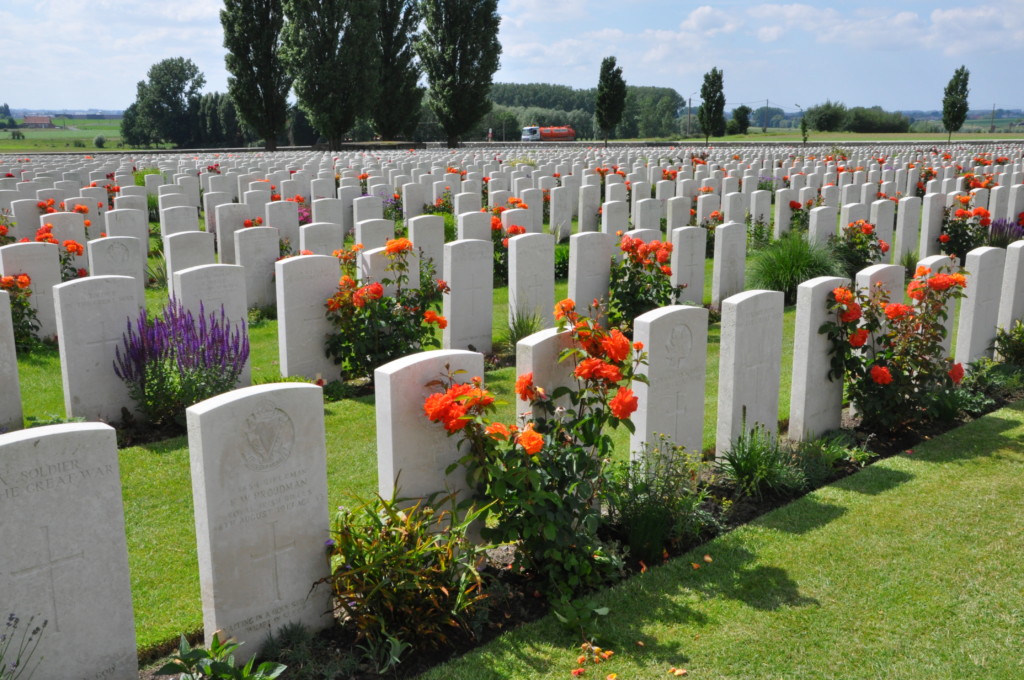
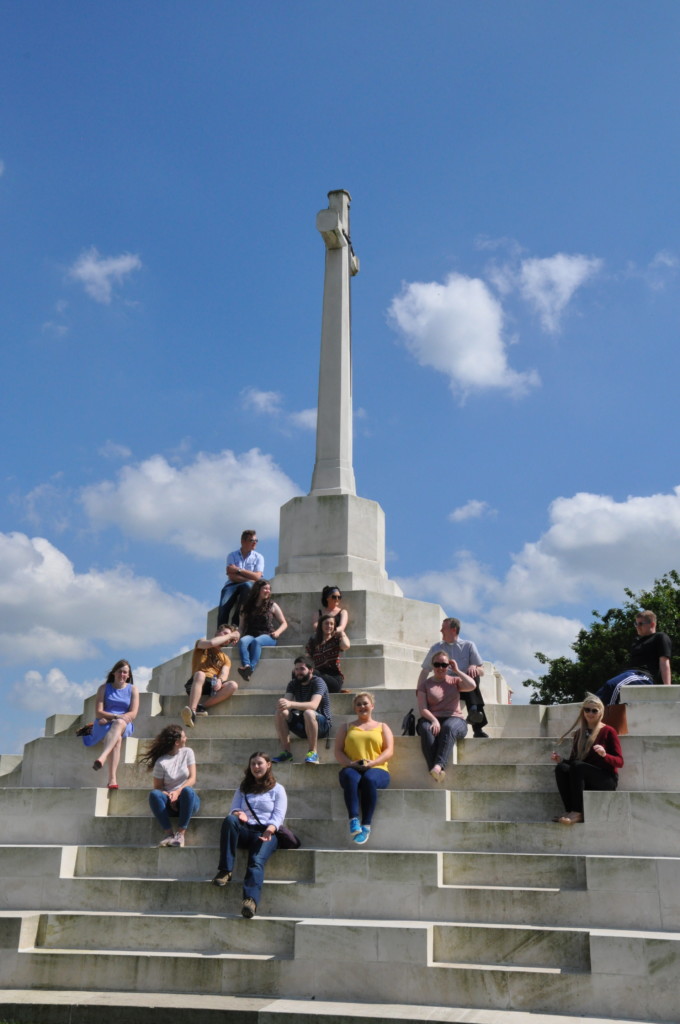
The pilgrimage ended with a visit to Essex Farm where there was prayers for the Feast of Saint John the Baptism followed by a recitation by Archbishop Richard Clarke, of the well known In Flanders Field poem by John McCrae.
In Flanders fields the poppies blow
Between the crosses, row on row,
That mark our place; and in the sky
The larks, still bravely singing, fly
Scarce heard amid the guns below.We are the Dead. Short days ago
We lived, felt dawn, saw sunset glow,
Loved and were loved, and now we lie
In Flanders fields.Take up our quarrel with the foe:
To you from failing hands we throw
The torch; be yours to hold it high.
If ye break faith with us who die
We shall not sleep, though poppies grow
In Flanders fields.
Listen: On the final day of the pilgrimage, Archbishop Eamon Martin and Archbishop Richard Clarke shared their thoughts about their special Somme Centenary Pilgrimage. Click here to listen.
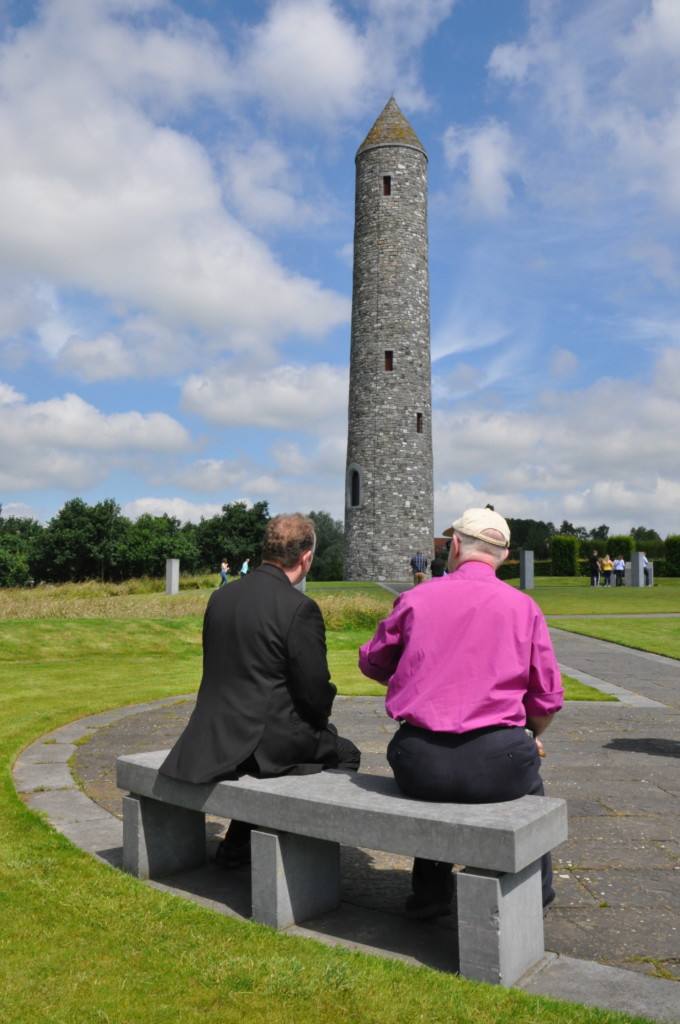
Click here for some of the images from day three of the pilgrimage.
The Battle of the Somme also known as the Somme Offensive, was a battle of the First World War fought by the armies of the British and French empires against the German Empire. It took place between 1 July and 18 November 1916 on both sides of the upper reaches of the River Somme in France. It was the largest battle of World War I on the Western Front; more than one million men were wounded or killed, making it one of the bloodiest battles in human history.

